The Google Nexus 9 Review
by Joshua Ho & Ryan Smith on February 4, 2015 8:00 AM EST- Posted in
- Tablets
- HTC
- Project Denver
- Android
- Mobile
- NVIDIA
- Nexus 9
- Lollipop
- Android 5.0
Software
With the Nexus 9, Google has released the biggest upgrade to Android since 4.0. In some ways, Android 5.0 represents one of the biggest shifts in the design of the OS ever. While we’ve had JIT compiling on Dalvik since Android 2.2, this has remained largely static for the past few years during Android’s monumental growth. With Android 5.0, we see the introduction of Android Runtime, or ART. Instead of trying to compile the application right before execution, ART does most of the compilation well before the application is launched. This incurs higher storage requirements, longer app-install times, and longer first-boot times, but with great benefits to performance. Google has done a great deal of work in general to try and resolve performance issues, as we first detailed in our coverage on ART.
While performance is one major aspect of Android 5.0, Google has also fundamentally redesigned the interface. To replace Holo, Google has introduced Material Design, which emphasizes depth, physics, animation, and a new palette of colors. While it would be great to go over all of these aspects of the Nexus 9, it’s best to refer to Brandon's review of Android 5.0 Lollipop for these issues. Instead, for this review I will mostly focus on the Lollipop experience specific to the Nexus 9. This means that the focus will be on performance of the device in general usage, along with the app ecosystem for Android tablets.
Unfortunately, these seem to be sore points of the Nexus 9 and the broader Android tablet ecosystem. Without question, if we’re talking about tablet applications they definitely do exist for the Nexus 9. The problem is that there is a pervasive lack of applications that are truly designed for a 9 inch, 4:3 aspect ratio display. Applications like Twitter, Facebook, and other first-party apps are simply blown up versions of the phone application. There is some level of extra content presented, but a lot of applications just don’t scale correctly which wastes a lot of real estate on the display. While we found issue with the Nexus 6’s lack of phablet-specific layouts, this is an even bigger issue on the Nexus 9.
While it’s possible to point fingers at app developers for not supporting Android properly, Google seems to have these problems as well. The settings interface is a single large pane of options, instead of a dual-pane interface that allows for simultaneous navigation of the overall settings and individual settings. The Play Store application is mostly similar in this respect, and the YouTube app is possibly the worst example of these kinds of issues. For example, while there is a tablet-specific video view in landscape, most navigation, search, and video selection is identical to what we see on a smartphone.
Nothing really takes advantage of the screen size other than simply being bigger than before. There aren’t any multi-window modes that exploit the larger screen size, and in general the Nexus 9 doesn’t introduce any new functionality that clearly justifies the need for a bag/backpack to carry it. There are applications that take advantage of the larger display, but these are rare. For the most part though, this is effectively true for most tablets other than the Surface Pro 3 which is effectively in a different category altogether.
On the performance side, the story is better but it isn’t perfect either. Similar to Brandon’s experience with the Nexus 6, I often saw random stutters on animations such as the app drawer or while opening an application. It’s hard to say what the cause is at this point, as the Nexus 6 seems to have similar issues with lag even though the Nexus 5 has none of these issues. One might point to FDE causing worse performance, but even that isn’t quite accurate as a build of Lollipop with FDE disabled didn’t do all that much in the way of solving these problems. Overall though, the experience is somehow less performant than the SHIELD Tablet on Android 5.0, even if these issues mostly present themselves in the form of minor frame drops from time to time. I also noticed that there was a distinct lack of available memory over time, which suggests a memory leak as on reboot launcher redraws effectively disappeared.
While these are significant issues that need to be resolved, the experience isn’t actually as bad as it seems. For what it’s worth, Material Design is a great new design scheme to replace the somewhat dated Holo UI that has been in use since Honeycomb/Android 3.0. While there are issues with the tablet experience, if one is willing to look past these issues they will find that the Nexus 9 is a respectable software experience. There’s also the potential for the Nexus 9 to spur improved tablet experiences, although this would be a slow change that could take years to be meaningful.


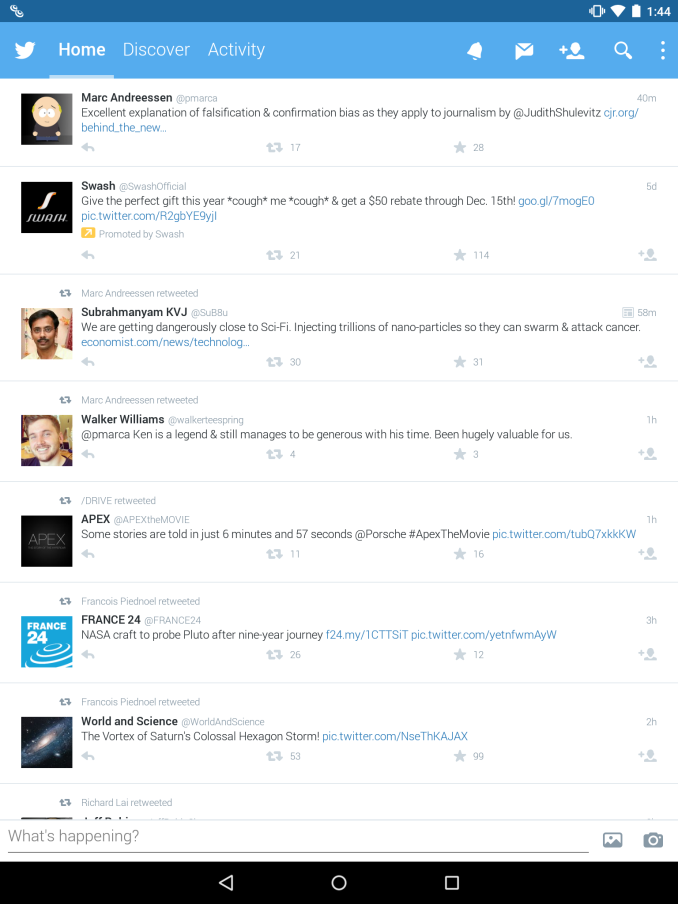
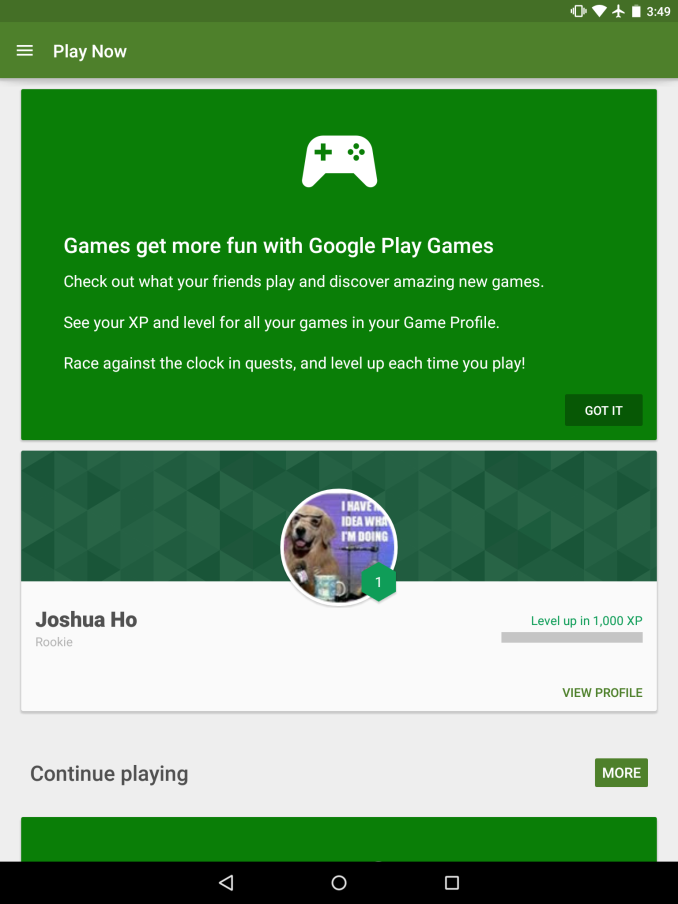
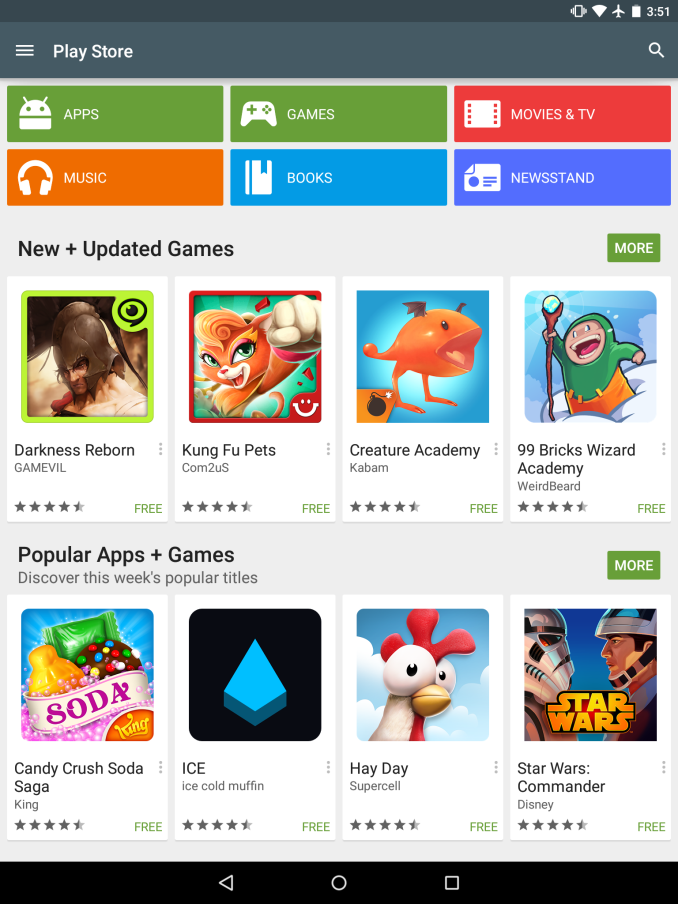
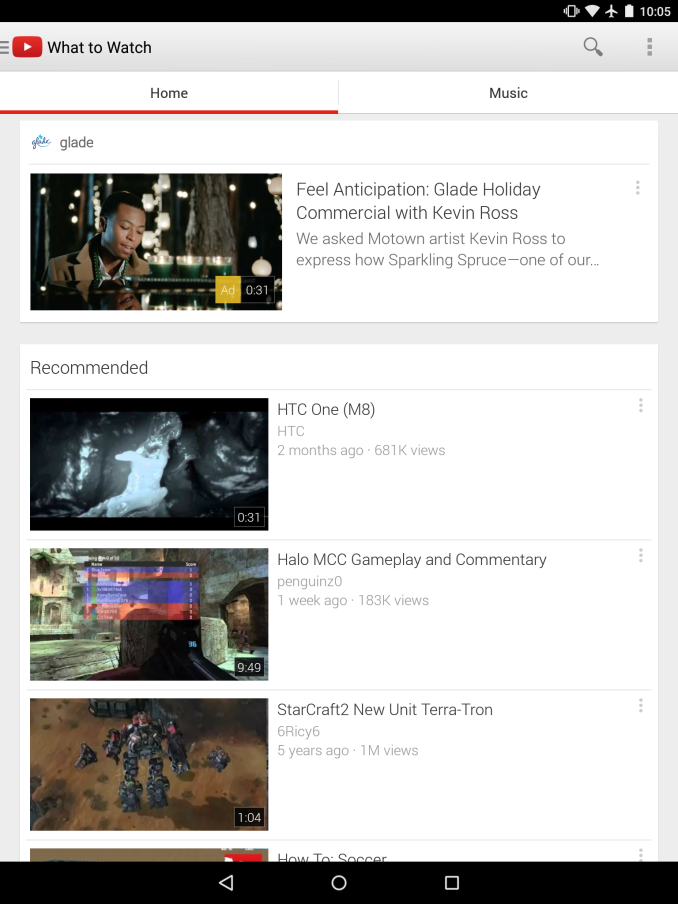
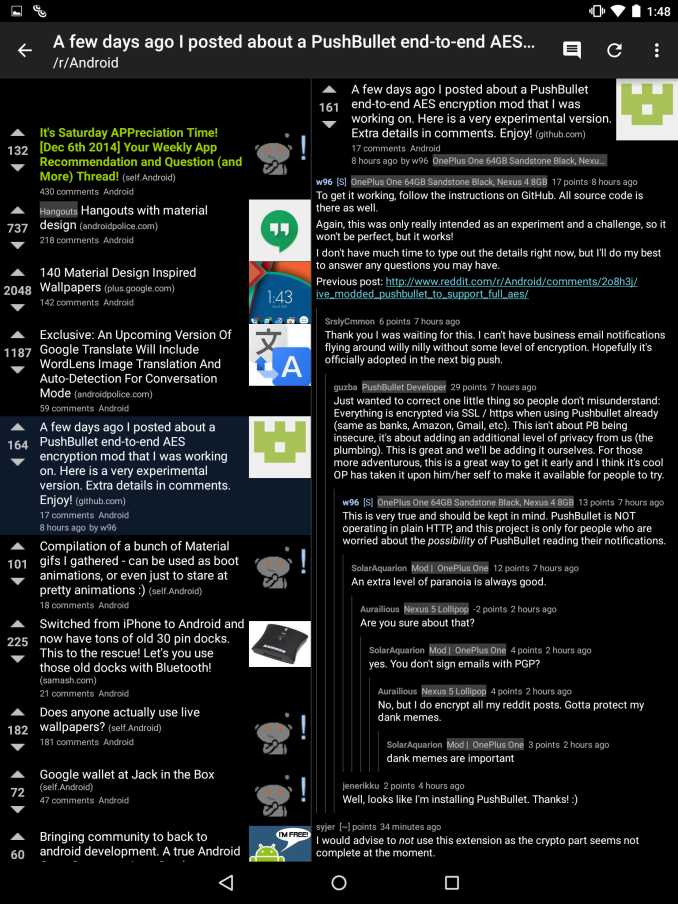








169 Comments
View All Comments
AbRASiON - Thursday, February 5, 2015 - link
LCD, not OLED? Blacks being grey? Nope :/blzd - Friday, February 6, 2015 - link
I'd actually rather grey blacks then the loss of detail in black areas. Pure black is nice, but not when it comes at the expense of shadow details.techn0mage - Thursday, February 5, 2015 - link
I agree that late is better than never. Rather than discuss things that can't be changed, I felt the following points were worth raising:Is there any Nexus 6 data in the benchmark charts? I didn't see any. The N6 and N9 were released roughly around the same point in time, and like the N5 and N7 they are high-profile devices in the Android landscape, so it would have been nice to have them in the charts to make comparisons. Please correct me if I've overlooked anything.
The Denver deep dive, while certainly relevant to Nexus 9 and good AT content on any day, was probably a good candidate for having its own article. I believe it is fair to say the Denver content is -less- time sensitive than the overall review. Hopefully the review was not held back by the decision to include the "DDD" content - and to be clear right now I have no reason to believe it was.
WndlB - Thursday, February 5, 2015 - link
Particularly in this kind of full-dress review of high-end devices, could you start covering the delivered sound, the DAC chips and headphone jack?Via A-B comparisons, I'm finding some real differences and, as people go to more high-quuality audiio streams (plus video sound), this is becoming a differentiator of significance. Thanks.
JoshHo - Tuesday, February 10, 2015 - link
We could do subjective opinion, but properly testing 3.5mm output requires significant investment in test equipment.name99 - Thursday, February 5, 2015 - link
I know this isn't exactly a Nexus9 questions, but how can your battery life results for iPad Air2 be so inconsistent?We are given 10.18 hrs for "display a white image" and 13.63 hrs for "display video". For an OLED display this is possible, but not for a LED-backlit display unless you are running the video at a "base-level" brightness of much lower than the 200 nits of the "display a white image", and what's the point of that? Surely the relevance of the "display a white image" is to show how long the display+battery lasts under normal usage conditions, not when being used as a flashlight?
My point is --- I am guessing that the "display a white image" test utilizes some app that prevents the screen from going black. Do you have confidence that that app (and in particular whatever tickling of the OS that is done to prevent sleep) is doing this in the energy optimal way, on both iOS and Android?
JoshHo - Tuesday, February 10, 2015 - link
I don't believe there was any real background CPU usage. To my knowledge the difference is that Apple enables dynamic contrast in movies.easp - Thursday, February 5, 2015 - link
"The successor to the Nexus 7 was even more incredible, as it pushed hardware that was equal to or better than most tablets on the market at a lower price. However, as with most of these low cost Nexus devices not everything was perfect as corners still had to be cut in order to hit these low price points."So, hardware that was equal or better, except it wasn't? This is a situation where being more specific would help. My guess, when you said equal or better you were referring to certain specifications, certain obvious specifications like core count, RAM, and maybe screen resolution?
mkygod - Friday, February 6, 2015 - link
Owned a Nexus 9 for almost 3 months. I purchased three actually to see if backlight bleed was any better, but nope; so I ended up returning them a couple weeks ago. The bleeding was pretty bad; worse than any LCD device i've ever used and definitely worse than the Nexus 5 and Nexus 7. And it would've been okay if it had uniform bleeding like the Nexus 5, but it had blotches of bright spots all along the edges which is even more distracting. I found the reflectivity with the screen a non-factor in my exclusively indoor use. It's a shame because the Nexus 9 is an otherwise damn good tablet. What's also disappointing, as the review points out, is if you want a high-end tablet around this size, your only options are the 9 and the Tab S. It seems like a lot of really good Android tablets are in the 8" size, such as the Shield and new Dell Venue, with more manufacturers on the horizon making tablets in this size.MartinT - Friday, February 6, 2015 - link
I wonder what level of load penalty is incurred by having to ship in optimized code from main memory. Is there any prefetching going on to preposition code segments in lower level caches ahead of being called?